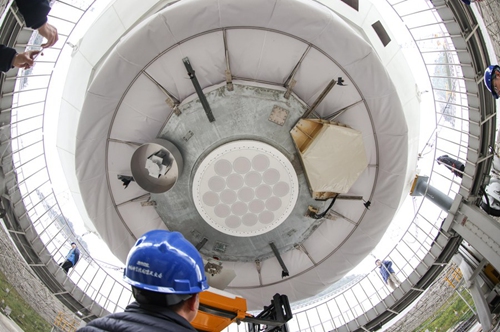
Aerial photo taken on Dec. 19, 2021 shows China's Five-hundred-meter Aperture Spherical Radio Telescope (FAST) under maintenance in southwest China's Guizhou Province.(Photo: Xinhua)

Photo taken on Dec. 19, 2021 shows China's Five-hundred-meter Aperture Spherical Radio Telescope (FAST) under maintenance in southwest China's Guizhou Province.(Photo: Xinhua)

Aerial photo taken on Dec. 19, 2021 shows China's Five-hundred-meter Aperture Spherical Radio Telescope (FAST) under maintenance in southwest China's Guizhou Province.(Photo: Xinhua)

Staff members conduct maintenance work at China's Five-hundred-meter Aperture Spherical Radio Telescope (FAST) in southwest China's Guizhou Province, Dec. 17, 2021.(Photo: Xinhua)
Using the Five-hundred-meter Aperture Spherical Radio Telescope (FAST), also dubbed as the "China Sky Eye," scientists have obtained accurate magnetic field strength in molecular cloud, a region of the interstellar medium that seems ready to form stars.
Employing the technique of HI Narrow Self Absorption (HINSA), they achieved a clear detection of the Zeeman effect -- the splitting of a spectral line into several components of frequency in the presence of a magnetic field. It is the only direct probe of interstellar magnetic field strength.
The result suggested that such clouds achieve supercritical state, a critical point when they collapse into stars, happened earlier than previously thought based on the standard model.
The study was published in Nature on Thursday.
